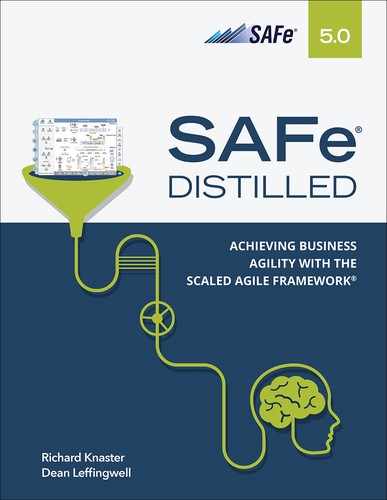10
Organizational Agility
“Agility is the ability to adapt and respond to change … agile organizations view change as an opportunity, not a threat.”
—Jim Highsmith
The organizational agility competency describes how Lean-thinking people and Agile teams optimize their business processes, evolve strategy with clear and decisive new commitments, and quickly adapt the organization as needed to capitalize on new opportunities.
Why Organizational Agility?
In today’s digital economy, the only truly sustainable competitive advantage is the speed at which an organization can sense and respond to the needs of its customers. Its strength is its ability to deliver value in the shortest sustainable lead time, to evolve and implement new strategies quickly, and to reorganize to better address emerging opportunities.
Organizational agility is critical to respond sufficiently to the challenges. “Unfortunately, the organizational structures, processes, and cultures of most businesses were developed more than a century ago. They were built for control and stability, not for innovation, speed, and agility. Small incremental changes to how businesses manage, strategize, and execute are insufficient to remain competitive. This requires a leaner and more agile approach which, in turn, requires sweeping changes that have a positive, long-lasting impact on the entire enterprise.”1
1. Richard Knaster and Dean Leffingwell, SAFe 4.5 Distilled: Applying the Scaled Agile Framework for Lean Software and Systems Engineering (Addison-Wesley, 2017).
As we described in Chapter 1, Business Agility, the SAFe approach to addressing the challenge of digital transformation is the ‘dual operating system,’ one that leverages the stability and resources of the existing organizational hierarchy while implementing a value stream network that leverages the entrepreneurial drive still present in every organization.
By organizing and reorganizing the enterprise around the flow of value instead of the traditional organizational silos, SAFe restores the second (network) operating system. It allows organizations to focus on both the innovation and growth of new ideas as well as the execution, delivery, operation, and support of existing solutions.
The organizational agility competency is instrumental in bringing the power of the second operating system to support the opportunities and threats of the digital age. This competency is expressed in three dimensions (Figure 10-1).
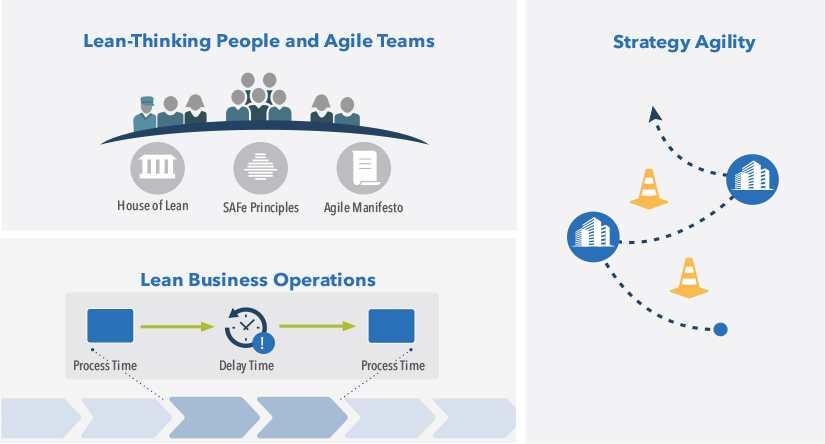
Figure 10-1. Three dimensions of organizational agility
Lean-thinking people and Agile teams. Everyone involved in solution delivery is trained in Lean and Agile methods and embraces their values, principles, and practices.
Lean business operations. Teams apply Lean principles to understand, map, and continuously improve the processes that deliver and support business solutions.
Strategy agility. The enterprise is Agile enough to continuously sense the market and quickly change strategy when necessary.
Each of these dimensions is described in the sections that follow.
Lean-Thinking People and Agile Teams
Lean-thinking people and Agile teams is the first dimension of organizational agility. This dimension is critical to delivering business solutions— not just the software applications and digital systems, but all of the supporting activities (e.g., privacy, security, support, availability) necessary to continually address the business problem. Even the solution itself is not stand alone, it lives in the larger context of its environment—including other hardware, software, network systems, and more.
Figure 10-2 illustrates that everyone involved in the delivery of business solutions—operations, legal, marketing, people operations, finance, development, and others—can apply effective Lean and Agile methods and embrace the mindset, principles, and practices.
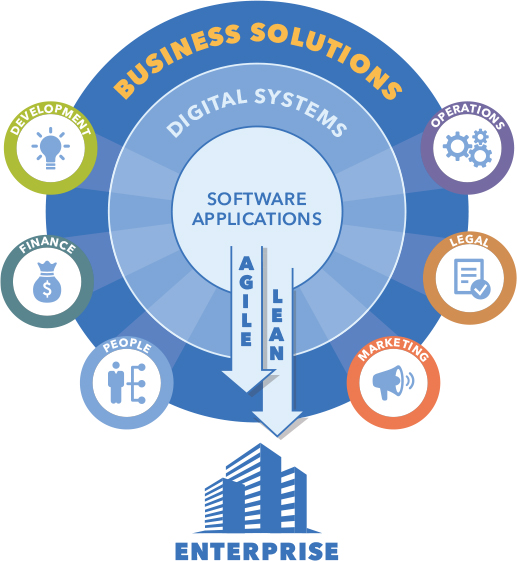
Figure 10-2. Extending Lean and Agile thinking to the enterprise
Extending the Mindset and Principles to the Enterprise
Extending the Lean-Agile mindset to the entire enterprise forms the cornerstone of a new management approach and results in an enhanced company culture that enables business agility. It provides leaders and practitioners throughout the enterprise with the thinking tools and behaviors needed to drive a successful SAFe transformation, helping individuals and the entire enterprise achieve their goals.
The Lean-Agile mindset establishes the right thinking, but as presented in Chapter 4, SAFe Principles, it’s the ten underlying principles that guide effective roles, practices, and behaviors. These principles are fundamental to organizational agility and the Lean-thinking people and Agile teams who enable it. Everyone in the enterprise can apply these principles to their daily work, and thereby become part of the leaner, and more Agile, operating system.
Agile Technical Teams
As described in Chapter 6, Team and Technical Agility, the adoption of Agile development within software development is fairly advanced and well understood. Now, with the advent of the DevSecOps movement, IT operations and security are also rapidly adopting Agile. It’s also making its way to other technical domains, such as networking, operations, hardware, electronics, and more. After all, Agile technical teams typically achieve a degree of unprecedented performance and personal satisfaction with their work. Who doesn’t want to be on a high-performing Agile team?
Agile Business Teams
Once the business understands this new way of working, it begins to recognize that the same benefits apply and typically starts creating cross-functional Agile business teams. These teams may be involved in any of the functions necessary to support developing and delivering business solutions, including the following:
Sales, product marketing, and corporate marketing
Sourcing and supply chain management
Operations, legal, contracts, finance, and compliance
People (HR), training, and facilities
Receiving, production, fulfillment, and shipping
Customer service, support, and maintenance
We’ve often observed a ‘three-step maturity cycle’ which illustrates how Agile business teams typically form and mature (Figure 10-3).

Figure 10-3. Agile business team maturity cycle
Step 1: Be Agile
First, the teams adopt and master the Lean-Agile mindset and practices. This creates a universal value system and a shared understanding of what Agile is. But it goes beyond that. The SAFe Lean-Agile principles are equally important and, in some cases, even more so, guiding the right behaviors for business teams and their leaders. Just as the North Star guides people when they don’t have a compass or a visible landmark to follow, the SAFe principles point the way to being Agile, even when specific Agile guidance doesn’t exist for that function.
Step 2: Join the Value Stream
Step 1 is a great start to help business teams become Agile, in both the mindset and the execution. However, if they only optimize and improve their efficiencies locally, the larger, end-to-end system may not improve. To optimize the system as a whole (Principle #2, Apply systems thinking), most Agile business teams join the value stream by becoming part of an Agile Release Train (ART), which builds the business solutions they support.
How that works in practice depends on the scope and the nature of the work the teams do. For example, product marketing may be directly embedded in ARTs, as whole teams or inside other teams. In other cases, the marketing function may operate as a shared service, supporting several ARTs. Regardless, a common view of work, an alignment of terminology, a shared cadence, and synchronization across all of the teams all help the value streams deliver quickly and predictably with better quality.
In addition, system integration becomes broader and more impactful when business teams provide new policies and procedures (e.g., licensing, privacy, security) that become embedded in code, legal documents, operational workflows, and other artifacts which are part of the business solution.
Step 3: Specialize the Principles and Practices
The first two steps move the enterprise further on the path to business agility. However, as business teams mature, it becomes increasingly important for them to evolve their practices and as we described in Chapter 6, to define what Agile and built-in quality means in their context. In this way, they make it their own. Agile marketing is a good example. Since it is so tightly coupled to solution development, a set of Agile marketing principles has emerged that focuses on, among other things, validated learning, customer discovery, and iterative campaigns.2
Agile People Operations
All this new agility puts substantial pressure on how new employees are recruited and on changing policies and procedures for managing compensation and career growth. But addressing the needs of knowledge workers challenges many traditional human resources (HR) practices. In their place, ‘Agile HR’ brings the Lean-Agile mindset, values, and principles to hiring, engaging, and retaining people. Six themes for modernizing people operations are summarized here:3
Embrace the new talent contract. This agreement recognizes the unique needs of knowledge workers and provides the engagement, empowerment, and autonomy they require to reach their full potential.
Foster continuous engagement. Continuous employee engagement occurs when everyone in the enterprise understands the business mission, is engaged in meaningful work, and is fully empowered to do their part.
Hire for attitude and cultural fit. Identify, attract, hire, and retain people who will be most successful in the dynamic team environment of an Agile culture.
Move to iterative performance flow. Many Lean enterprises have eliminated the annual performance review. Instead, leaders and managers offer fast, continuous feedback and also solicit and receive feedback in return.
Take the issue of money off the table. Replacing traditional, individual incentives with the right shared incentives helps tailor compensation and motivation to the differing needs of individuals in the next-generation workforce.
Support impactful learning and growth. Modern careers are fueled more by personal choices and meaningful growth than by climbing a hierarchical ladder. Successful employers need to respond by providing rewarding work, more fluid roles, and individual growth paths.
3. https://www.scaledagileframework.com/wp-content/uploads/delightful-downloads/2017/09/Agile-HR-with-SAFe.pdf
Agile Working Environments
In addition to more contemporary HR practices, experience and research have shown that working environments and physical spaces are vital to highly productive Agile teams.4
4. Jorgen Hesselberg. Unlocking Agility: An Insider’s Guide to Agile Enterprise Transformation, Kindle edition (Pearson, 2018).
For example, Figure 10-4 illustrates an Agile working environment for teams. In this design, individual teams work in a ‘pod’ of semi-private cubicles. Walls within the pod are low, allowing for informal discussions. Their personal focus space is inside their cubicle, yet it allows informal communication and knowledge sharing within the team. However, the higher outside walls of the pod prevent distractions from the noise and conversations of other teams or people who pass by. In addition, the gathering spaces in the middle provide an area for hoteling team members, spontaneous pairing, and quick, informal sessions. The pod is supported by whiteboards, a large monitor for video conferencing, and solution and process information radiators.
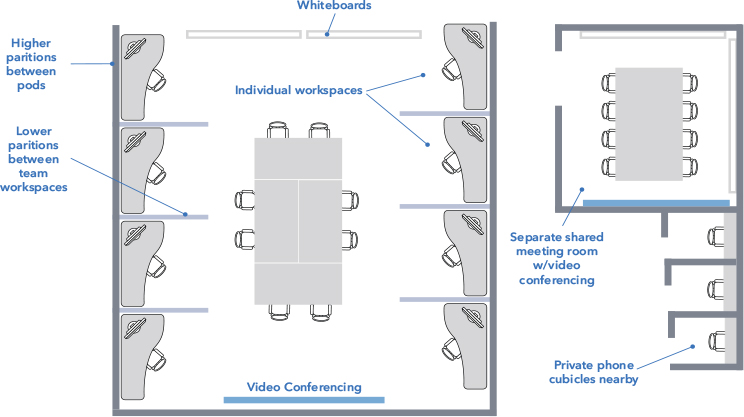
Figure 10-4. An Agile working environment for teams
Ideally, there’s a dedicated meeting room nearby that provides space for the team to post their information on the walls and collaborate with remote team members and other teams. Where feasible, a few private phone cubicles support the need for individual privacy.
Workspaces for Remote Workers
Agile development is designed and optimized for collocated teams—it’s a key principle of the Agile Manifesto (“The most efficient and effective method of conveying information to and within a development team is face-to-face conversation”5). To this end, enterprises often spend significant time and energy establishing collocation. The Agile pod design in Figure 10-4 is a reflection of that. However, collocation is not always feasible. Simply, some of the people who can contribute the most are not available to be located—or relocated—on site. The fact is that many Agile teams are distributed across geographies, sometimes with significant time zone differences.
5. https://agilemanifesto.org/principles.html
We have both witnessed and participated in high performing teams with a significant degree of distribution. While being distributed does not change the basic Agile ways of working, it does impose some requirements on the business and the remote workers. These may include:
High bandwidth video and audio connectivity
Tooling for team and program Kanban boards and backlogs
A wiki or intranet site providing access to strategic themes, portfolio vision, and other critical information
Collaboration tools for communication, visualization, and ideation
Overlapping core hours for DSU, iteration planning, demos, and other events
Commitment to routinely travel to PI planning events
Cross-Team Collaboration Spaces
The physical environment also plays an important role in supporting collaboration and innovation by providing spaces away from the daily work. Success patterns for these spaces include the following:
Ease of booking. Make it easy to book rooms for innovation by avoiding blocking them with recurring meetings.
Facilitation kits. Provide kits that include pens, stickies, scissors, and tape to support any innovation process.
Moveable whiteboards. Whiteboards on wheels ensure that the output is not lost and can be worked on elsewhere in future sessions.
Rearrangeable furniture. As the purpose of collaboration changes, the layout of the room will also need to adapt. Avoiding fixed furniture will allow people to set up these spaces for a variety of different scenarios.
Video conferencing. Always-on video conferencing ensures that everyone, including remote workers, can participate.
Cross-team collaboration spaces. Larger rooms support critical events such as Program Increment (PI) planning, system demos, Inspect and Adapt (I&A), as well as other cross-team activities.
PI Planning and ART Collaboration Space
PI planning is the most critical event in SAFe. As such, a semi-dedicated physical space for planning is a wise investment that will pay for itself over time. In addition to the physical space, adequate communication channels must be established for attendees who cannot be present in person. For many enterprises, room for a single ART or two is about all that can be allocated permanently. Figure 10-5 provides a typical room layout for a PI planning event.

Figure 10-5. A typical room layout for a PI planning event
In larger enterprises with multiple ARTs, it may be impractical to provide a dedicated space for all the ARTs. In this case, a single on-site ART planning location becomes the centerpiece, but other internal or external venues may be needed. Of course, this space won’t be used just for the regular PI planning schedule. It will also host the system demo and the I&A, as well as additional team-sharing spaces during the PI. A permanent location adds predictability, minimizes uncertainty, and reduces the transaction cost of organizing these events. In our experience, this space adds to the collaborative workspace strategy that benefits the Agile enterprise.
Visualizing Work
Frequently, during various SAFe training forums, attendees ask, “But if I was to leave here and do only one thing to start implementing Lean-Agile development at scale, what would it be?” Our answer is always the same: visualize the work. That is why when you visit an Agile enterprise, you see work everywhere—on walls, whiteboards, monitors, hallways, and wherever you look. Visualization converts the abstract to tangible; flushes out unnecessary, unplanned, unapproved, or duplicate work; and aligns everyone to the actual current state.
The common thread across all these approaches is that the information is always available: no effort is needed to go and discover it. Based on our experiences, we’ve recommended some starting points:
Visualize customers. Agile teams use personas to bring the customer to life and post their representations on the walls of their team area, so they are always top of mind.
Visualize the flow of work. Making the current work visible using Kanban systems exposes the amount of Work In Process (WIP), bottlenecks, and what people are really doing as opposed to what others think they are doing.
Visualize solution health. Customer support teams have long seen the value in displaying the number of waiting calls, daily closed and open tickets, and current Service Level Agreements performance prominently on monitors close to the teams who rely on that information. This approach has been adopted by Agile teams to include metrics on the state of the current solution.
Visualize strategy. Another example of visualizing work is an ‘investment corridor’ (Figure 10-6) that identifies all current and potential epics in flight at one large enterprise. Rather than confining the portfolio visualizations to a room, information in the corridor is outside, making it easy for people to walk up and add their thoughts and suggestions.
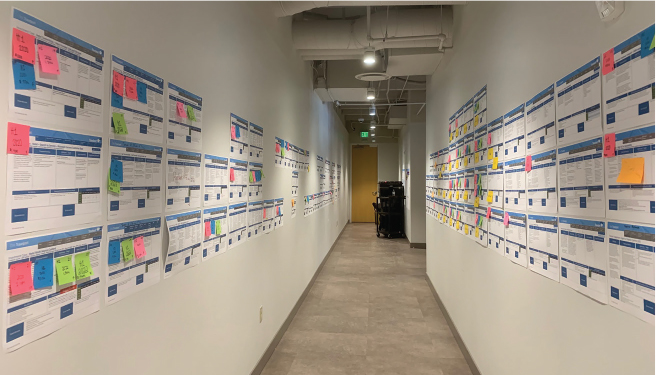
Figure 10-6. The investment corridor for a portfolio prioritization workshop (Courtesy of Travelport International LTD)
Tooling and Automation
Lean-thinking people and Agile teams have specific training and insights on how work flows through the system. They understand that optimizing one activity does not optimize the whole, and that delays in the process (see the ‘Mapping Value Streams’ section) exert more influence throughout than the efficiency of any one step. To combat this, they implement the tooling necessary to see the work as it flows through the system to identify bottlenecks and opportunities for improvement. This tooling typically includes the following:
Application lifecycle management (ALM) tools demonstrate and connect the various backlogs and Kanban systems that teams use to manage their local work and provide enterprise-wide visibility.
Integrated development environments provide the tools developers need to author, edit, compile, and debug software.
Continuous delivery pipeline tools support the large number of artifacts— primarily code, tests, scripts, metadata—and provide the automation needed to efficiently integrate, test, build, and deploy the solution.
Collaboration tools support local and distributed development and the intense degree of interaction required.
Systems engineering tools support the modeling and requirements of large systems and establish traceability across the elements, administering quality assurance and compliance.
Most of these tools are available in both open source and commercial products at a relatively advanced and mature state. Applying them comprehensively is yet another critical factor in achieving business agility.
Lean Business Operations
Lean business operations is the second dimension of organizational agility. Organizational agility requires enterprises to understand both the operational value streams that deliver business solutions to their customers, as well as the development value streams (which are the primary focus of SAFe) that develop those solutions.
Operational value streams contain the steps and the people who provide end-user value using the business solutions created by the development value streams.
Development value streams contain the steps and the people who develop the business solutions used by operational value streams.
Figure 10-7 illustrates the relationship between operational and development value streams.
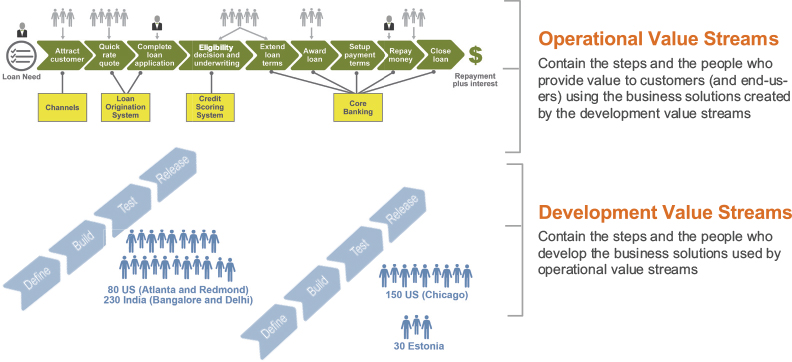
Figure 10-7. Operational and development value streams
A trigger (e.g., product order or new feature request) starts the flow of value, and there’s some form of value delivered at the end. The steps in the middle are the activities used to develop or deliver the value.
For most developers, the people who run the operational value streams are the customers of the development value streams. They directly use and operate the solutions that support the flow of value to the end user. This requires that developers do the following:
Understand (and often help analyze and map) the operational value streams they support
Apply customer-centricity and design thinking
Include the business teams that support the solution in the development process
These responsibilities help assure that the business solutions developed provide a ‘whole-product solution’ to satisfy the needs of both internal and external customers.
Contain the steps and the people who provide value to customers (and end-users) using the business solutions created by the development value streams
Contain the steps and the people who develop the business solutions used by operational value streams
Mapping Value Streams
“Lean companies focus on value streams to eliminate non-value-creating activities.”
—Alan Ward
Identifying operational and development value streams is a critical task for every Lean enterprise. Once identified, value stream mapping6 is used to analyze and improve business operations. Figure 10-8 illustrates a simplified example of value stream mapping, which, in this case, shows a few of the steps in a marketing campaign launch.
6. Karen Martin, Value Stream Mapping: How to Visualize Work and Align Leadership for Organizational Transformation, Kindle edition (McGraw-Hill Education, 2013).

Figure 10-8. Value stream mapping showing total lead time, total processing time, and time efficiency
Teams look for the opportunity to improve the efficiency of each step, consequently reducing the total lead time. This includes reducing process time, as well as improving the quality of each step measured by the percent complete and accurate.7
7. The percent complete and accurate represents the percentage of work that the next step can process without it needing to go back for rework.
As is the case in Figure 10-8, the delay time (the waiting time between steps) is often the biggest source of waste. If the team above wanted to deliver a marketing campaign faster, they would need to reduce the delay times, as the processing steps are only a small part of the total lead time. Reducing delays is typically the fastest and easiest way to shorten the total lead time and improve time to market.
Implementing Flow
In addition to mapping the value stream, the entire process can then be visualized with a Kanban system as a means to continuously improve performance and identify bottlenecks. SAFe Principle #6, Visualize and limit Work In Process (WIP), reduce batch sizes, and manage queue lengths, is then applied to optimize flow. Figure 10-9 illustrates a simplified Kanban system for a set of marketing campaigns associated with a major product launch.
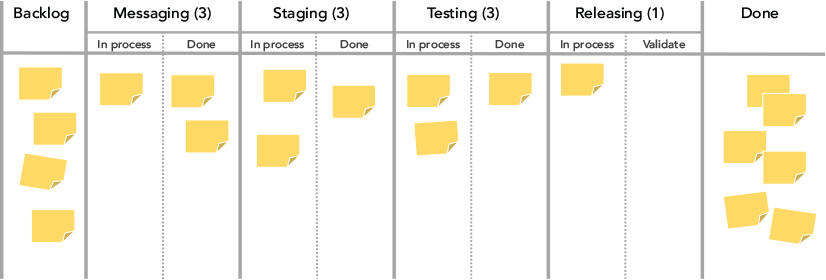
Figure 10-9. A simple Kanban system for marketing campaigns for a new product launch
Each marketing campaign, represented by a card, works its way through the system from the backlog to done. WIP limits (the numbers in parentheses in Figure 10-9) help control the amount of work in the system.
Strategy Agility
Strategy agility is the third dimension of the organizational agility competency. Strategy agility is the ability to sense changes in market conditions and implement new strategies quickly and decisively when necessary. It also includes the good sense to persevere on the things that are working—or will work—if given sufficient time and focus. Figure 10-10 illustrates how strategy must respond to market dynamics to successfully realize the enterprise’s mission.

Figure 10-10. Strategy responds to market dynamics
Enterprises that have mastered strategy agility typically exhibit a number of capabilities, including those described in the following sections.
Market Sensing
Market sensing represents the culture and practice of understanding changing market dynamics based on the following:
Market research
Analysis of quantitative and qualitative data
Direct and indirect customer feedback
Direct observation of the customers in the marketplace
Savvy, Lean-thinking leaders ‘go see’ and spend significant time in the place where the customer’s work is actually performed. They return with current, relevant, and specific information about the realities of their products and services, instead of opinions filtered through other perspectives.
Innovating Like a Lean Startup
After sensing opportunities, the Lean enterprise visualizes and manages the flow of new initiatives and investment by adopting a ‘build-measure-learn’ Lean startup cycle (Chapter 9). These are often new business solutions, but they may also be new business processes and capabilities that use existing solutions. Testing the outcome hypothesis with a Minimum Viable Product (MVP) before committing to a more significant investment reduces risk while generating fast and useful feedback.
Implementing Changes in Strategy
Identifying and defining a new strategy is only the first step. Once determined, the strategy must be communicated to all stakeholders in a new vision and roadmap and then, of course, be implemented. After all, significant changes to strategy often affect multiple solutions in the portfolio and require coordination and alignment. Consequently, most large strategy changes require new epics to implement the change across value streams.
Figure 10-11 illustrates how new epics go through the various Kanban systems and backlogs that manage the flow of work. During the normal course of work all backlogs are continuously reprioritized. Kanban systems help changes in strategy move quickly across value streams to the teams who do the implementation. This way, execution is aligned—and constantly realigned—to the evolving business strategy.

Figure 10-11. Strategy change makes its way quickly through the network of dynamic backlogs
However, other smaller, local changes may require only new stories or features and will go directly in the team or program backlogs.
Innovation Accounting
It can take a long time to evaluate the benefits of a change in strategy. Traditional financial and accounting metrics Profit and Loss (P&L) and Return On Investment (ROI) are lagging economic indicators that occur too late in the life cycle to inform the evolving strategy. In their place, innovation accounting (see Applied Innovation Accounting on the SAFe website8) applies leading indicators—actionable metrics focused on measuring specific early outcomes using objective data. They are an essential part of the economic framework that drives business agility.
8. https://www.scaledagileframework.com/guidance-applied-innovation-accounting-in-safe/
Ignoring Sunk Costs
A key factor in strategy agility is ignoring sunk costs, the expenses that have already occurred in the course of solution development. Sunk costs cannot be recovered or changed and are independent of any future costs a company may incur.9 Because strategic decision-making affects only the future course of business, sunk costs are absolutely irrelevant when evaluating a change in strategy. Instead, decision-makers should base all strategy decisions solely on the future costs of the initiatives necessary to achieve the change. When stakeholders do not have to waste energy to defend past spending, the organization can pivot more quickly to a new strategy.
9. https://www.investopedia.com/ask/answers/042115/why-should-sunk-costs-be-ignored-future-decision-making.asp
Organizing and Reorganizing Around Value
Finally, SAFe Principle #10, organize around value, guides enterprises to align their development efforts around the full, end-to-end flow of value. This principle highlights the ‘dual operating system,’ one that leverages the benefits of the existing hierarchy but also creates a value stream network. This network assembles the people who need to work together, aligns them to the needs of the business and customer, minimizes delays and handoffs, and increases quality.
But as strategy moves, future value moves with it; new people and resources must be applied. In other words, some degree of reorganization is required. Indeed, in some cases, this will require entirely new value streams be formed to develop and maintain new solutions. Other value streams may need to be adjusted, and some will be eliminated entirely as solutions are decommissioned. Fortunately, the people and teams of an increasingly Agile enterprise see those changes coming through the portfolio. They can then use their new knowledge and skills to reorganize Agile teams and ARTs around value whenever it makes sense.
Agile Contracts
No portfolio is an island. Instead, each typically depends on other portfolios, suppliers, partners, operational support, and more, all of which require implicit or explicit contracts for the value to be delivered. Traditionally, these contracts are based on the assumption that requirements, deliverables, and service levels are known up front and will remain stable. We know from experience that is just not true. As strategy changes, these traditional contracts can become enormous impediments that lock the business into assumptions of a former strategy. Although the business would like to change strategy, it is blocked by existing contracts.
Achieving business agility requires a more flexible approach to all types of contracts. How this is achieved depends on the nature and type of contract, but each must be considered in terms of the adaptability that may be required as strategy evolves. Contracts for suppliers that provide components, subsystems, or services for enterprise solutions are particularly critical as they may tend to lock solution elements into requirements that were fixed long before. The ‘SAFe managed-investment contract’ describes an Agile approach to contracts and can be found on the SAFe website.10
Summary
Without organizational agility, enterprises can’t react fast when things happen. To be fully responsive to threats and opportunities requires Lean and Agile ways of working to spread throughout the entire organization. This change demands a workforce that is not only trained in Lean-Agile practices, but one that understands and embodies the culture, values, and principles.
Lean business operations recognize that delighting customers goes further than purely solution development. The entire customer journey, which includes delivering, operating, and supporting business solutions, needs to be continually optimized to reduce time to market and increase customer satisfaction. Strategy agility provides the ability to sense and respond to changes in the market, to evolve and implement new strategies quickly, and to reorganize when necessary to address emerging opportunities. As a result, ‘change becomes an opportunity, not a threat.’
